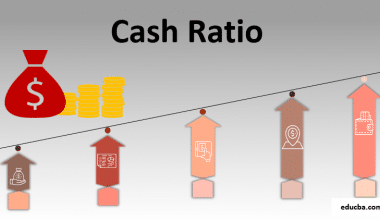Businesses can monitor their growth and development by tracking performance metrics. Productivity, profit margin, scope, and cost are key performance metrics that a company can monitor to see if its objectives and goals are being accomplished. A firm is divided into numerous areas, each with its own set of key performance indicators. Here, we’ll explain what performance metrics are, and how they can drive sales for your business.
What are Performance Metrics?
Performance metrics are measurable statistics that are used to track processes within a firm by employing important indicators such as activities, employee behavior, and productivity. These metrics monitor and assess the achievement of general company objectives. Performance metrics are a collection of statistics that companies evaluate against a predetermined goal (such as staff productivity or sales goals).
It is critical to understand the distinction between a performance measure and a key performance indicator (KPI). Performance metrics are used to compare an area of a business to a defined target or goal. Performance metrics generate more information than a key performance indicator. A KPI will monitor performance using a defined objective metric.
A performance metric, for example, may quantify a marketing department’s productivity in comparison to a defined objective, but a KPI might measure how a marketing department contributed to sales from an email campaign.
Why Should Performance Metrics Be Tracked?
Tracking these performance metrics is critical since it can benefit a business by providing vital information on what is driving growth and profit. Performance metrics aid in the implementation of methods for meeting goals in all aspects of a company. Tracking performance indicators can help businesses prepare for improvements, adjustments, and changes to their operations in order to accomplish their objectives.
Types Of Performance Metrics
Performance management tactics are used by organizations to track metrics that measure areas such as sales, project management, staff productivity, and overall company processes. Metrics that measure various critical features are included in each of these company performance areas. Sales metrics, for example, are a type of business performance indicator that measures sales data.
To assess achievement and meet objectives, most firms use a set of performance metrics. Good performance metrics should provide data that can be used immediately to achieve business objectives. The following are key metrics used by firms to track performance in each area.
Business Performance Metrics
Business performance metrics track and evaluate various business operations such as sales, marketing, and profitability. This enables data to be compared to predefined objectives or goals. The data generated by measuring performance indicators assists firms in determining where to make changes to achieve established goals. Three critical measures to monitor in the context of a company’s overall growth are:
ROI indicators: significant metrics to examine since they can evaluate whether or not an investment will result in a return (profit). Tracking ROI can assist firms in determining which investments are worthwhile and which are not. For example, an investment that guarantees a 20% return yields a higher ROI than one that can only promise a 10% return.
Profitability: an important performance statistic that tracks a company’s profit margin and compares it to desired goals. This can assist assess whether any changes are required to achieve those objectives. For example, a company can utilize profitability measures to compare its average profit margin to its target profit margin. This information can be used by the corporation to alter its profit-generating sales strategies.
Productivity measurements assess the ratio of work produced to resources used. An assembly line worker who can make 100 products in an hour, for example, is more productive than one who can only generate 50 items in an hour.
What Are the Top Business Performance Metrics?
While there are hundreds of useful business performance metrics, not all of them will apply to a particular company. In addition, irrelevant metrics can harm corporate morale and diminish productivity. So, what are the most critical KPIs for a business owner to monitor?
#1. Employee Efficiency
A number of key performance indicators (KPIs) can assist a business owner in understanding how his or her personnel are functioning. Some of these indicators are concerned with the workforce, while others are concerned with individuals.
Revenue per employee can be calculated by dividing the company’s revenue by the number of employees. Similarly, profit per employee is computed by dividing the company’s earnings by the number of employees. These indicators will assist a business owner in ensuring that his or her team does not cost more than it generates.
It is critical to remember that data is only one component in evaluating an employee’s performance. Qualitative aspects of an individual’s performance include their willingness to learn and their attitude. These aspects, as well as facts, should be addressed while delivering comments.
#2. Revenues from Sales
The total sales revenue of a corporation is the amount of money earned through selling services or items. Some small business owners are just concerned with profits. After deducting taxes, production expenditures, and other costs, net profit is computed. However, it is preferable to track both profit and revenue.
Understanding revenue can provide useful information about an organization. For example, it can assist a business owner in determining whether sales are stronger during certain times of the year or whether clients tend to purchase more on specific days.
Profitability or profit ratio can also be calculated by a business owner. They might accomplish this by dividing net profits by sales revenue. This figure will inform a business owner about how well his or her organization converts sales into profits. If a company’s profit ratio is poor, the owner can enhance it by cutting out unneeded expenses.
#3. Customer Support
Low customer satisfaction not only leads to lost sales, but it can also diminish a company’s average customer lifetime.
Customers who are dissatisfied with their experience are said to inform 9 to 15 other individuals about their dissatisfaction. They are also more inclined to submit unfavorable reviews online, which can harm a company’s brand. This is because 93% of shoppers say reading an internet review influences their decision to buy anything.
Customer happiness can be measured in a variety of ways. First, a business owner should research customer experience (CX), which assesses how consumers feel about doing business with a company.
The customer experience of a brand will assist decide whether personnel are polite and responsive enough when customers ask queries. It may also aid in determining whether it is simple for customers to make a purchase or obtain a refund if necessary.
Net Promoter Score, Customer Satisfaction Score, and Customer Effect Score are some well-known methods of assessing customer satisfaction. These strategies rely on surveys to determine how satisfied customers were following a purchase or encounter with a company.
#4. Strategy Implementation
Strategic implementation refers to how a business owner ensures that the strategies set in place are followed by his or her company. What good is a corporate growth strategy if no one implements it?
A variety of KPIs might be regarded as a kind of plan implementation. The optimal KPI for this purpose is determined by a company’s strategy.
Certain strategic consequences are difficult to quantify. Customer satisfaction is one example of this. However, strategies like NPS surveys provide measurable data.
It may be beneficial for a business owner to separate strategic and operational KPIs. When it comes to long-term business goals, strategic KPIs are more important. Every day, operational KPIs such as average call handle times are calculated.
#5. Levels of Cash Flow
Cash flow issues were reported as the cause of failure by 82% of enterprises that failed. This means that monitoring cash flow levels might spell the difference between a company’s success and failure.
Cash flow is not the same as revenue. Knowing a company’s total income does not tell you whether it has enough cash on hand to deal with an emergency. It also does not tell you how much money is invested in inventory or other non-liquid assets.
Sales Performance Metrics
Sales metrics assess an individual’s or a team’s performance in selling a company’s goods or services. Lead generation and retention, sales action, as well as key performance indicators like total revenue and customer reach, are examples of common sales performance KPIs. Companies track sales metrics by comparing these actions to the sales targets established by the team or firm. Monitoring each area will provide useful information on how a company’s sales strategies are working. The following are key sales performance metrics:
Activity metrics: provide information on what a company’s salespeople perform on a daily basis. Sales managers can impact sales activity (for example, by instituting daily sales goals or requiring a certain number of sales phone calls), making it easier to track. Metrics such as the number of calls made or emails and proposals sent to prospects are used to track sales activity.
Lead generation metrics: critical to analyze in order for organizations to assess the prospect stage of generating new sales. In sales, excellent lead generation metrics to track include average lead response time and percentage of follow-ups.
Sales productivity indicators track the rate at which a salesperson or team meets revenue targets. The faster a revenue objective may be fulfilled, the higher the sales productivity. Sales performance metrics include information such as the amount of time spent on selling activities and the average number of sales tools employed during that time.
Important Sales Performance Metrics
The best combination of sales metrics is determined by various aspects, including your company’s present performance, particular problems, and product kind.
However, there are a few conventional sales success criteria that top SaaS finance and revenue professionals employ that you should think about:
#1. Opportunities Won
This is the number of pipeline opportunities that result in a sale or contract signature. Opportunities won can alternatively be interpreted as the number of new clients gained per month or quarter.
To discover whether there are any differences, compare your actual opportunities won number to your anticipated figures. If you notice significant variations between predicted and actual results, investigate the pipeline or your sales forecasting procedures.
#2. Closed Won
Measuring total deal wins over time only provides a partial view of sales effectiveness. For extra perspective, review your closed won/loss summary, which indicates the number of deals won and lost during a certain time period.
This comparison not only tells you about the success of your sales process, but it can also indicate whether or not you have a good product/market fit. A large number of lost transactions (or a rising trend of lost deals) may indicate that your product does not meet the proper need or that you are marketing to the wrong consumer base.
#3. Ramp for Sales Reps
By measuring a running total of bookings per rep, sales rep ramp, also known as sales ramp-up time, allows you to evaluate how long it takes for a new recruit to attain full productivity.
Understanding your average sales ramp-up time frame allows you to assess the success and efficiency of your sales training program. It also provides a solid platform for projecting revenue based on quota achievement.
#4. The Sales Cycle
The sales cycle measure is the average number of days a deal exists from the time it is created to the time it is closed (or the current date). If a deal has yet to close, you may see this measure labeled as deal age in your CRM or sales dashboard for real-time sales data.
Understanding your sales cycle allows you to anticipate future revenue more. It’s also a useful real-time statistic for sales managers to use when doing pipeline reviews.
Managers and sales representatives should examine deals that have been open for longer than the usual sales cycle in order to identify barriers to closing.
#5. Rate of Deal Conversion
The percentage of deals that result in a sale or signed contract is referred to as the deal conversion rate. Divide the number of deals won over a certain time period by the total number of transactions.
Monitoring deal conversion rates allows you to assess the efficacy of your sales and marketing efforts. You may also analyze deal conversion rates by type (for example, renewal, upsell, or new client) to see which sales channels are most productive and where you can improve.
#6. Created Opportunities
Maintaining a strong sales pipeline and anticipating revenue are both dependent on lead creation. The quantity of new sales or deals added to the CRM in a specific time period is measured by opportunities produced, a sales success statistic.
You can examine the total number of sales opportunities generated as well as the value of new opportunities generated. Both forms of this statistic are useful for anticipating and tracking the efficacy of marketing and business development operations.
#7. Renewal of Bookings
One of the most cost-effective ways to create revenue is to sell to existing clients. And it’s critical for SaaS companies to increase net revenue retention, which is likely the most crucial indicator of a company’s health.
By keeping track of reservations that are up for renewal, you underline the value of selling to current clients and assist your team members in taking a proactive approach to contract renewal. You can also determine your busy seasons for contract renewals over time and prepare your employees accordingly.
Project Management Performance Metrics
Project management performance metrics are used to assess a project’s efficacy and profitability. The procedures inside each stage of a project are measured and compared to goals and objectives from the first assignment brief to its completion. This information can help determine how the project should be completed. A project manager often monitors performance metrics from the following areas:
Productivity tracking: gives data that allows a project manager to examine the resources utilized to finish the project as well as the total effort put in within the project boundaries.
Scope of work metrics: give data that can be used to determine the timeline and money required to execute a project.
Quality and satisfaction metrics: assess the quality of the project’s deliverables at completion and incorporate customer-centric data.
Cost metrics are important performance indicators to monitor in project management. Cost management must account for any unanticipated factors that may develop throughout the course of the project.
Gross margin is the difference between the entire cost of a project and the income generated by it for an organization. Gross margin is a significant performance statistic that is typically targeted at the start of a project to keep the process focused on a certain revenue objective.
Employee Performance Metrics
Employee performance metrics evaluate employees’ productivity and efficiency in meeting specified benchmarks that contribute to a company’s overall growth. Tracking employee performance indicators enables managers to influence changes or make necessary enhancements to assist employees in meeting their job objectives. Businesses commonly track the following employee performance metrics:
Work quality measures are used to assess the effectiveness of staff performance. Subjective appraisal is the most well-known metric for measuring work quality because it breaks down larger business goals into smaller, individual employee goals that may be attained with management help.
Work quantity is another employee performance metric to monitor because it is easier to quantify than quality. The number of sales or products generated is a common metric measured.
Work efficiency metrics integrate information from work quality and quantity to track the resources needed to create a result. A work efficiency measure to track is the time or money it takes to manufacture a product.
Employee productivity is a significant performance statistic that can assist firms in changing procedures, changing behavior, and meeting target goals.
In Conclusion,
Any business leader may use performance indicators to fine-tune their operations and streamline their processes. Everything must function smoothly and at an appropriate level in order to develop an efficient and lucrative firm.
Related Articles
- KEY METRICS: Essential Metrics Every Business Should Have
- SUCCESS METRICS: Customer, Project, Business Metrics & All You Need
- SALES METRICS: Definition, Examples, and Guide
- MARKETING METRICS: Meaning, Examples, Email, Social Media & Content Marketing.






